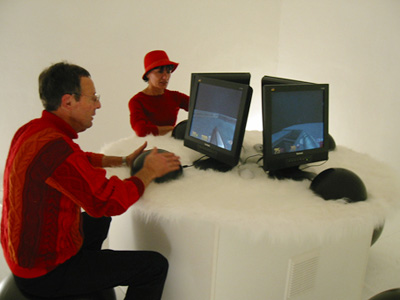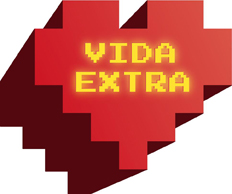

We understand video games as a cultural product, with its own production, distribution, and consumption channels that intersect with those of other media.
Innovation in the production, distribution, and consumption cycle of video games is enhanced by the technologies that are used.[digital] [información] [conectividad]
Even so, we recognize the symbolic importance that video games have for children and young people in the imaginary representation they make of their relationship with the world, that is, in the construction of their ideology.[ideology games]
Establish a horizontal process of knowledge transmission between the workshop participants, the teachers, and the mediators of LaFundició, and to promote, as far as possible, the creation of work networks between them beyond JustPlayIt. [construcción de conocimiento vs. enseñanza]
Promote reflection and dialogue on the forms of representation/simulation that characterize video games and how they affect subjectivity, desire, or the collective imagination. [real players]
Generate innovative models of narrativity, avatars (characters), environments, objectives, and gameplay, taking advantage of the forms of collective authorship typical of video game production and the indiscriminate use and manipulation of free and proprietary code. [just play it]
*The word ‘Objective’ has a military origin: an objective is any point or area that is intended to be reached or occupied as a result of a military operation, as well as any object on which a firearm is fired.
We are not interested in the didactic use of video games.
We reject the simplistic dialectic between reality and fiction on which the idea that the two imitate each other is based; on the contrary, we understand that reality and representation cross and transform each other in complex ways.
number of participants: 1 group-class + 1 teacher from the school + 1 monitor from LaFundició
Introduction: The workshop proposal will be shared and a brief dialogue will be established around video games. It will be necessary to find out how many boys or girls play video games and what kind. We will propose the division of the conceptual design of video games into four sections: Simulation, Environments, Avatars and Gameplay, which will be illustrated with examples.
Work teams: From this division, work teams will be formed according to the interest of the participants. Each group will be assigned a color and will wear an identifying bib. The bibs will act as an interface that will show different data that we will add with adhesive labels as the workshop progresses; thus, the bib will show the name of the workshop, the group in which the boy or girl participates and the stage (which we will call LEVELS) in which their work is located, as these levels are completed, the boys and girls will be able to add distinctive stickers.

*Objectives of each group:
Simulation: Define the content and narrative form of the game. Games are not a narration as such, but rather have a simulation mechanic so that, in retrospect, we can explain the game as a story; this can range from the saga of civilizations to the total absence of narration, from linear narration to looped action, passing through stories within other stories.
Environments: Design the environment where the narrated/simulated action of the game takes place. Environments can range from the creation of completely imaginary worlds to the closest everyday context, or mix degrees of realism. The most abstract characteristics of these environments should be kept in mind, such as the force of gravity or the number of dimensions.

Avatars: Define the type of characters that star in the game, their physical appearance, how they move, their psychological traits or their biography and their way of life/non-life. In short, it is about building their identity.
Gameplay: Define the way and the degree in which the player or players interact with the game, the rules and objectives of the game (if any) and the strategies that must be carried out. Thus, there are many types of games such as shooters, platforms, simulators, MMORPG’s… and we can create new ones.

Extra life: When taking a seat in the workshop, those in the class who want to play the role of communicator and mediator between the teams will be invited to place the EXTRA LIFE sticker. These boys or girls will be in charge of making the information generated by each group public and accessible.

The result of this design work will be drawings, sketches, diagrams, texts… that will be used to make a digital sketch of the game.
The sketch will be posted on a bulletin board enabled on the LaFundició website where students can leave their criticisms and suggestions, especially as the game expands with the contributions of more participants.